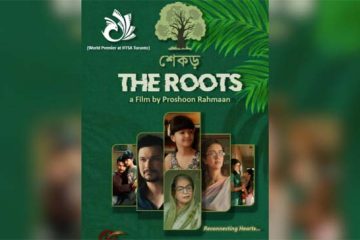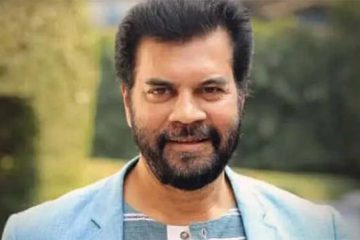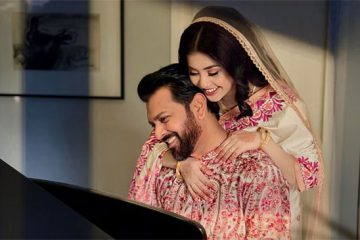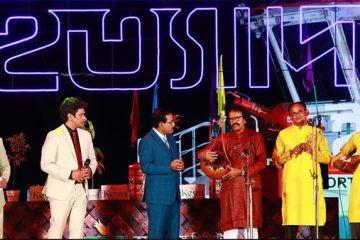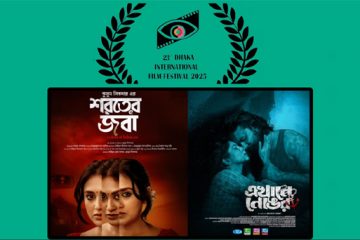Syed Abdul Hadi
 It was an early October day and I was passing by a busy London super market area, when a mellow tone of a flute struck my ears. I could not but stood mesmerised, till the hypnotic melody came to an end. I can’t express the feeling in language as it can only be felt. I was dripped with a very nostalgic feeling. I looked around and found that two South American young musicians, not the ‘Pied Piper of Hamelin’, were playing on their indigenous flute. I approached them and asked if I could get a recording of this piece of music they just played. They gave me a CD and told me that I could find this piece titled ‘By gone days’ in it. I gave them ten pounds in return and was happy that this state of mind can be expressed in the language of music only. Such is the power of music! Music triumphs where language fails and this in particular, is the role of music in films. It has to express the particular mood of a sequence where dialogue of camera fails to reach.
It was an early October day and I was passing by a busy London super market area, when a mellow tone of a flute struck my ears. I could not but stood mesmerised, till the hypnotic melody came to an end. I can’t express the feeling in language as it can only be felt. I was dripped with a very nostalgic feeling. I looked around and found that two South American young musicians, not the ‘Pied Piper of Hamelin’, were playing on their indigenous flute. I approached them and asked if I could get a recording of this piece of music they just played. They gave me a CD and told me that I could find this piece titled ‘By gone days’ in it. I gave them ten pounds in return and was happy that this state of mind can be expressed in the language of music only. Such is the power of music! Music triumphs where language fails and this in particular, is the role of music in films. It has to express the particular mood of a sequence where dialogue of camera fails to reach.
Unfortunately, this basic role of music had never been properly appreciated by our filmmakers. They always indulged in exploiting music as ‘fill up the ears’ ignoring the fact that silence sometimes is the best music. Of course, there are exceptions, depending on the merit of the director of the film and the director of music as well. Directors like Fateh Lohani, Khan Ataur Rahman, Zahir Raihan, Amjad Hossain, Sk. Niamat Ali are some of those who could exploit music to create desired expression and also to add to the esthetic quality of their films.
In 1956 our first feature film “Mukh O Mukhosh” was released. Despite all its short-comings it was hailed and heartily welcomed, as it could overcome so many hurdles including lack of technical facilities and artists etc. Samar Das, one of our pioneer maestros scored the music. Even a music director of his stature was criticised at that time for not being able to be selective in using proper musical instruments in particular sequences, as he used electric guitar in a scene highlighting a village with paddy fields all around. May be there was no other alternative available to him at that time as there were very few musicians to choose from, not to speak of an orchestra group. Nevertheless, songs were very well-tuned and gained immense popularity and appreciation.
We all know, songs play a very important part in our films and seem to be inseparable in filmmaking formula of this subcontinent in general. This is perhaps due to the influence of opera to which our filmmaking owes its ignition. This is not unusual, but the problem is, we have not been able to salvage our filmmaking from that tradition as a different media. With an exception of very few, our films are more an opera than a film even today. Indiscriminate use of songs, continuous and irritating music from the very beginning till end has been common rule in our films. It is not unusual to get a headache if one ventures to enjoy a film till its end. This is true about the filmmaking practice of the entire subcontinent with a very few exceptions of what we call ‘art film’.
Nevertheless, there are sparks of excellence yet in this dismaying situation in our films. As mentioned earlier, some reputed directors could put signs of their artistic skill in exploiting songs in some of their films. In this context, we may remember some immemorable songs like “O Amar Chokkhu Nai” in Fateh Lohani’s “Aasia”, “Achhen Amar Muktar” and “Hayre Kopal Mondo” in Amjad Hossain’s “Golapi Ekhon Train-e”, or “Shoachan Pakhi” in Humayun Ahmed’s “Srabon Megher Din” which are few examples of what emotional and esthetic effect can be achieved by proper use of songs in films.
Some of the best examples of situational songs in films is perhaps Satyajit’s “Pather Panchali” where he used the traditional song ‘Haire din toh gelo sandhya holo, par karo amare” to create an atmosphere of the ultimate tragedy of human life. Similarly, we may remember the “last post” played on trumpet by a fellow soldier at the tragic death of his friend in a combat in the famous film ‘From Here to Eternity’. Many such examples can be cited from famous international films. Actually, the quality and effectiveness of music in films depend on the intellectual ability to choose, when to use, what to use, how much to use and mostly when not to use.
The writer is a renowned singer.


